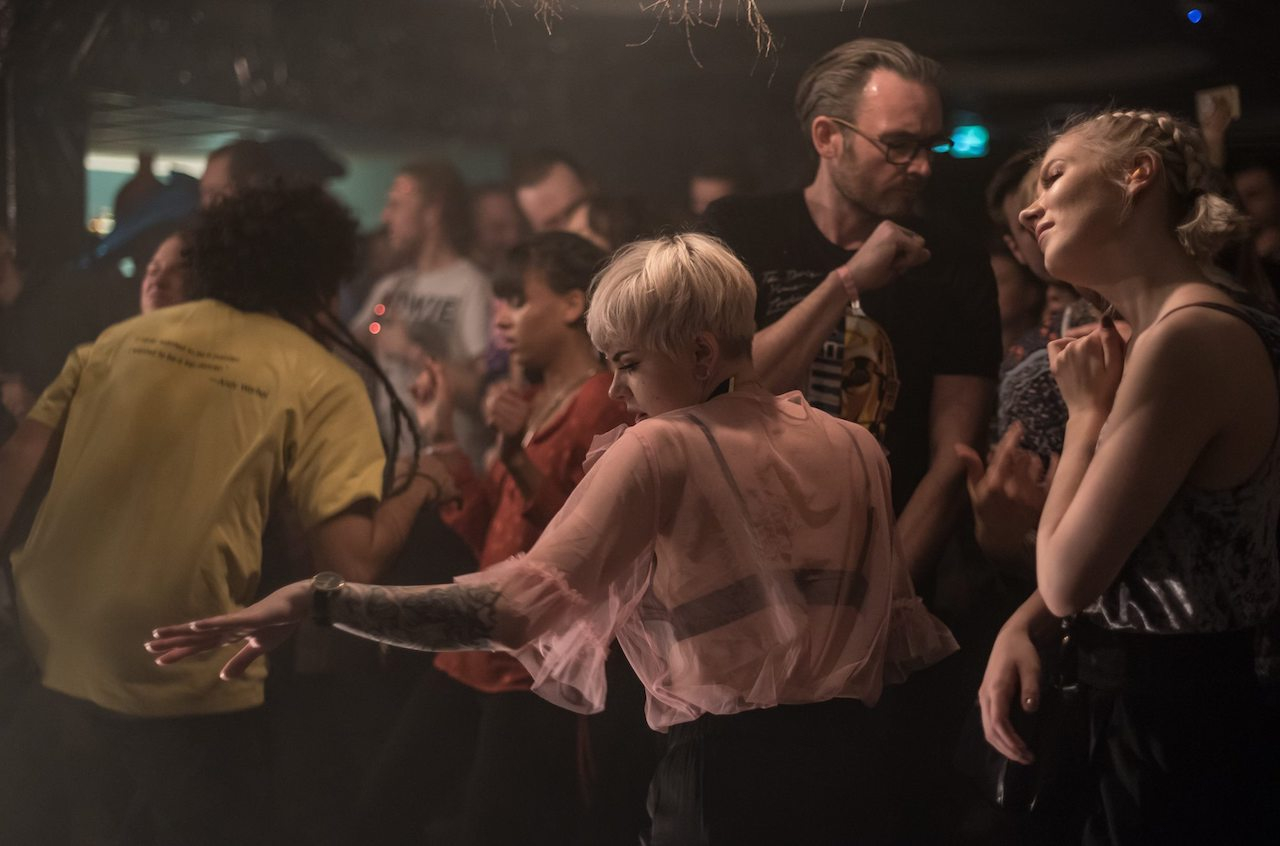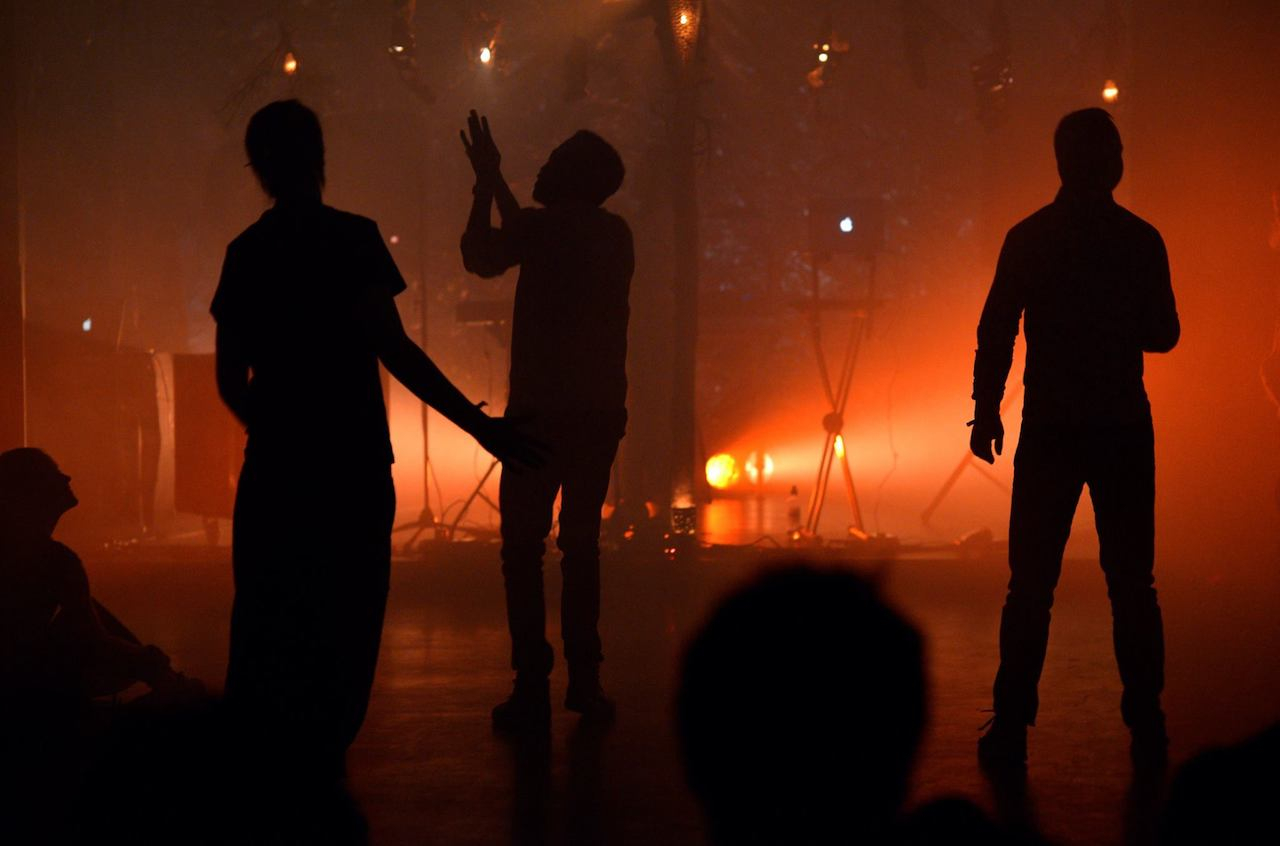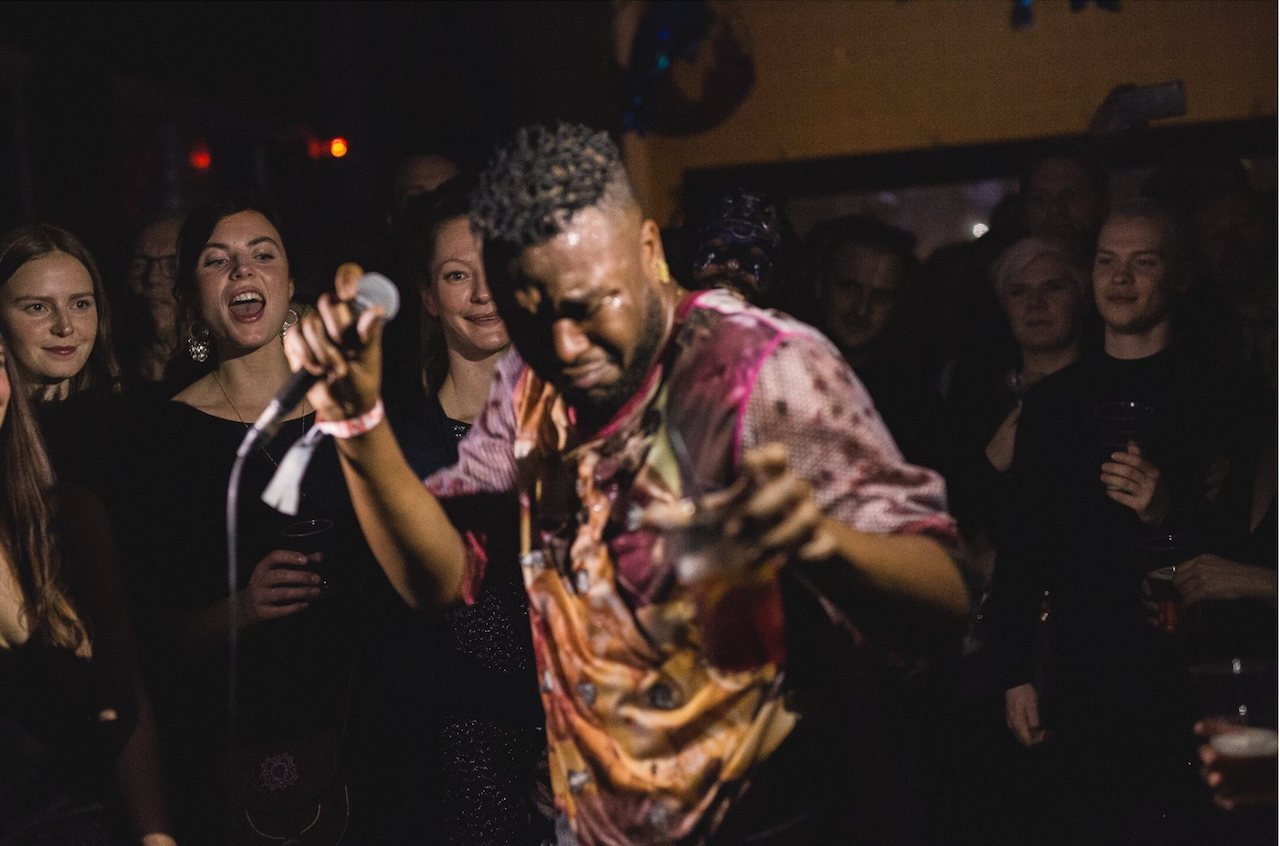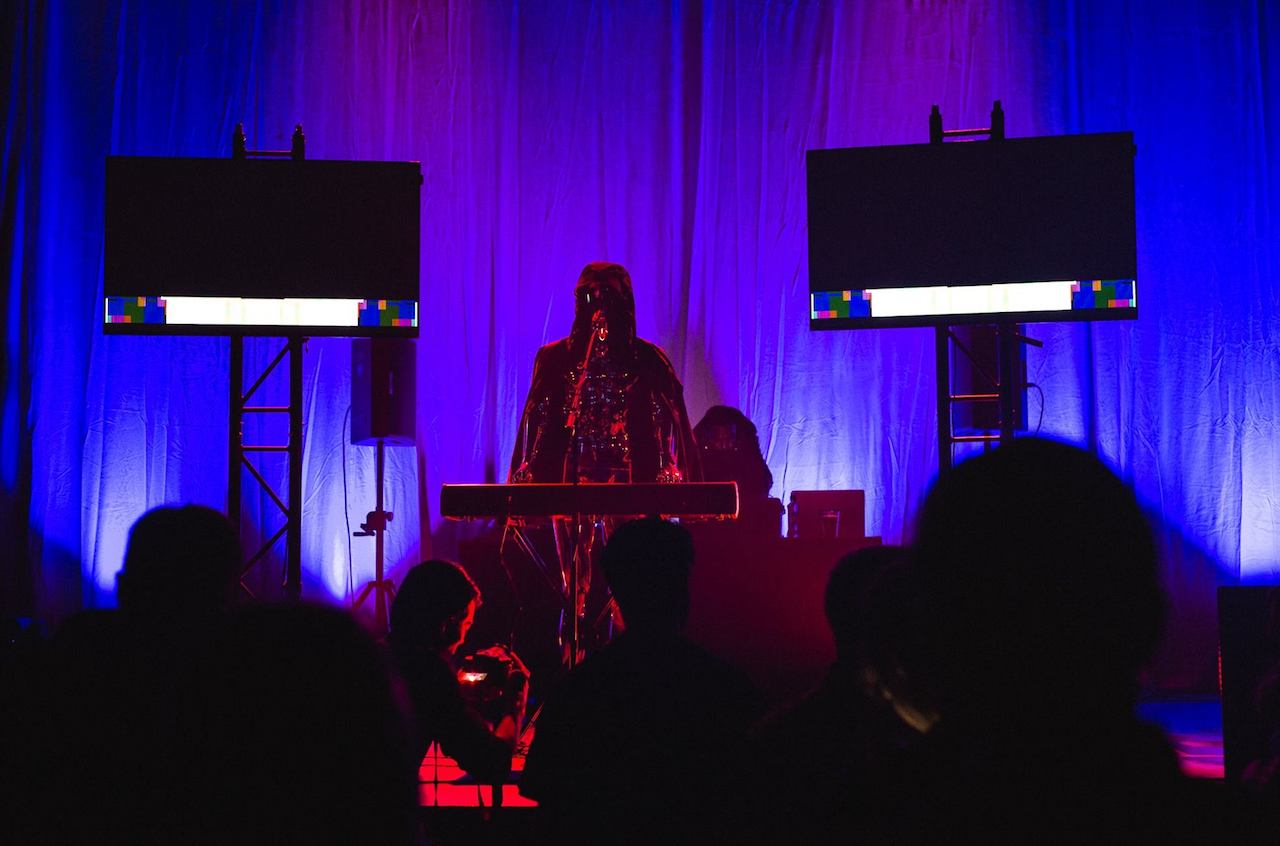- There can be little arguing against Tromsø's claim as the "techno capital of Norway." That Bel Canto, Biosphere, Röyksopp, Mental Overdrive and Bjørn Torske all call it home is impressive, especially considering it's a city of less than 75,000 people located within the Arctic Circle. Considering its latitude and musical pedigree, I arrived there anticipating dark, grim weather, the kind of conditions that lend themselves to extended studio sessions.
It turns out Tromsø is anything but. Tucked between pretty mountain ranges, it's a charming and spotless town with a photogenic vista around every corner. Its thriving student population keeps the demographic young and diverse. Whatever alchemy sparked the techno scene in the '80s remains a mystery, but its continued reputation is thanks in part to Insomnia Festival, the northernmost gathering of its kind.
Insomnia has been held annually in Tromsø since 2002. Christian Hollingsæter, an active figure in the local music scene, was one of its core members; he even spent a period as the festival's director. Hollingsæter's untimely death in May at the age of 35 was a rupture in this small community. While this loss was felt throughout the weekend, Insomnia 2017 still succeeded in putting Tromsø's best foot forward.
Insomnia's core programme was housed at Driv, a multi-level venue staffed by University Of Tromsø students. The student-y decor played to the strengths of each room's lineup. Every wall of the the long, low-ceilinged Café was covered in strips of aluminium foil, which added a metallic chime to the bass-driven music of Berlin-based Norwegian Boska, UK drum & bass stalwart Loxy, and Mala, who ripped through an uptempo and well-received set that turned the basement into a steamy sweatbox. The vaulted ceiling of Hvit had been decorated with helium-filled metallic dolphins, providing a slow-moving eeriness to Varg and AnnaMelina's performance. Despite minimal movements and only some vocoder FX, AnnaMelina proved herself an arresting vocalist with a commanding stage presence.
Two nights later in Hvit, Cakes Da Killa's neon visuals totally transformed the space. The relatively limited floorspace worked in his favor as he jumped offstage to spit his final tracks in the middle of the packed audience. The magenta streamers that hung from the ceiling in Stor, Driv's largest space, helped to fill out the room during its quieter moments, like when Actress placed a gleaming chrome mannequin, vintage synthesiser and redundant microphone at the front of the stage. He busied himself with a laptop in a dark corner, serving up abstract sound sketches that eventually relented and morphed into more danceable tracks ("Hazyville"). Stor's disco ball also helped hype up the room's more energetic sets, such as the keyboard theatrics of Egyptian chaabi star Islam Chipsy, the live techno and red lasers of Khidja, and the vintage house of Mike Servito, who closed the festival.
Insomnia's programming also shone a good amount of attention on Scandinavian artists. Norwegian act Juicy Máihlái's layered loops of vocal improvisations were arrestingly intimate. Mental Overdrive's acid-tinged live set was standing room only in the appropriately named offsite venue Small Projects. Indie pop outfit Strange Hellos and industrial sound artisan SØS Gunver Ryberg added their own specific shades.
Making any festival work takes a group effort, with scores of people involved in executing a vision passed down from the founders. For Insomnia, 2017 may be remembered as a bittersweet year internally, but from the outside it did a great job of showing that Tromsø’s glowing reputation applies as much to the passion of its behind-the-scenes communities as to its greatest musical exports.
Photo credits /
Tina Derakhshan - Lead, Fire
Mats Gangvik - Crowd
Isak Dalsfelt - Cakes Da Killa, Actress
 Insomnia's core programme was housed at Driv, a multi-level venue staffed by University Of Tromsø students. The student-y decor played to the strengths of each room's lineup. Every wall of the the long, low-ceilinged Café was covered in strips of aluminium foil, which added a metallic chime to the bass-driven music of Berlin-based Norwegian Boska, UK drum & bass stalwart Loxy, and Mala, who ripped through an uptempo and well-received set that turned the basement into a steamy sweatbox. The vaulted ceiling of Hvit had been decorated with helium-filled metallic dolphins, providing a slow-moving eeriness to Varg and AnnaMelina's performance. Despite minimal movements and only some vocoder FX, AnnaMelina proved herself an arresting vocalist with a commanding stage presence. Two nights later in Hvit, Cakes Da Killa's neon visuals totally transformed the space. The relatively limited floorspace worked in his favor as he jumped offstage to spit his final tracks in the middle of the packed audience. The magenta streamers that hung from the ceiling in Stor, Driv's largest space, helped to fill out the room during its quieter moments, like when Actress placed a gleaming chrome mannequin, vintage synthesiser and redundant microphone at the front of the stage. He busied himself with a laptop in a dark corner, serving up abstract sound sketches that eventually relented and morphed into more danceable tracks ("Hazyville"). Stor's disco ball also helped hype up the room's more energetic sets, such as the keyboard theatrics of Egyptian chaabi star Islam Chipsy, the live techno and red lasers of Khidja, and the vintage house of Mike Servito, who closed the festival.
Insomnia's core programme was housed at Driv, a multi-level venue staffed by University Of Tromsø students. The student-y decor played to the strengths of each room's lineup. Every wall of the the long, low-ceilinged Café was covered in strips of aluminium foil, which added a metallic chime to the bass-driven music of Berlin-based Norwegian Boska, UK drum & bass stalwart Loxy, and Mala, who ripped through an uptempo and well-received set that turned the basement into a steamy sweatbox. The vaulted ceiling of Hvit had been decorated with helium-filled metallic dolphins, providing a slow-moving eeriness to Varg and AnnaMelina's performance. Despite minimal movements and only some vocoder FX, AnnaMelina proved herself an arresting vocalist with a commanding stage presence. Two nights later in Hvit, Cakes Da Killa's neon visuals totally transformed the space. The relatively limited floorspace worked in his favor as he jumped offstage to spit his final tracks in the middle of the packed audience. The magenta streamers that hung from the ceiling in Stor, Driv's largest space, helped to fill out the room during its quieter moments, like when Actress placed a gleaming chrome mannequin, vintage synthesiser and redundant microphone at the front of the stage. He busied himself with a laptop in a dark corner, serving up abstract sound sketches that eventually relented and morphed into more danceable tracks ("Hazyville"). Stor's disco ball also helped hype up the room's more energetic sets, such as the keyboard theatrics of Egyptian chaabi star Islam Chipsy, the live techno and red lasers of Khidja, and the vintage house of Mike Servito, who closed the festival.
 Insomnia's programming also shone a good amount of attention on Scandinavian artists. Norwegian act Juicy Máihlái's layered loops of vocal improvisations were arrestingly intimate. Mental Overdrive's acid-tinged live set was standing room only in the appropriately named offsite venue Small Projects. Indie pop outfit Strange Hellos and industrial sound artisan SØS Gunver Ryberg added their own specific shades. Making any festival work takes a group effort, with scores of people involved in executing a vision passed down from the founders. For Insomnia, 2017 may be remembered as a bittersweet year internally, but from the outside it did a great job of showing that Tromsø’s glowing reputation applies as much to the passion of its behind-the-scenes communities as to its greatest musical exports. Photo credits / Tina Derakhshan - Lead, Fire Mats Gangvik - Crowd Isak Dalsfelt - Cakes Da Killa, Actress
Insomnia's programming also shone a good amount of attention on Scandinavian artists. Norwegian act Juicy Máihlái's layered loops of vocal improvisations were arrestingly intimate. Mental Overdrive's acid-tinged live set was standing room only in the appropriately named offsite venue Small Projects. Indie pop outfit Strange Hellos and industrial sound artisan SØS Gunver Ryberg added their own specific shades. Making any festival work takes a group effort, with scores of people involved in executing a vision passed down from the founders. For Insomnia, 2017 may be remembered as a bittersweet year internally, but from the outside it did a great job of showing that Tromsø’s glowing reputation applies as much to the passion of its behind-the-scenes communities as to its greatest musical exports. Photo credits / Tina Derakhshan - Lead, Fire Mats Gangvik - Crowd Isak Dalsfelt - Cakes Da Killa, Actress